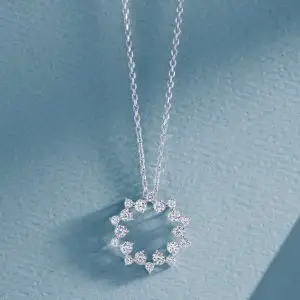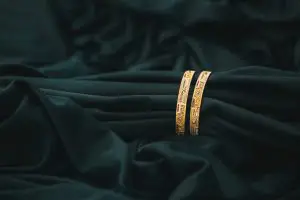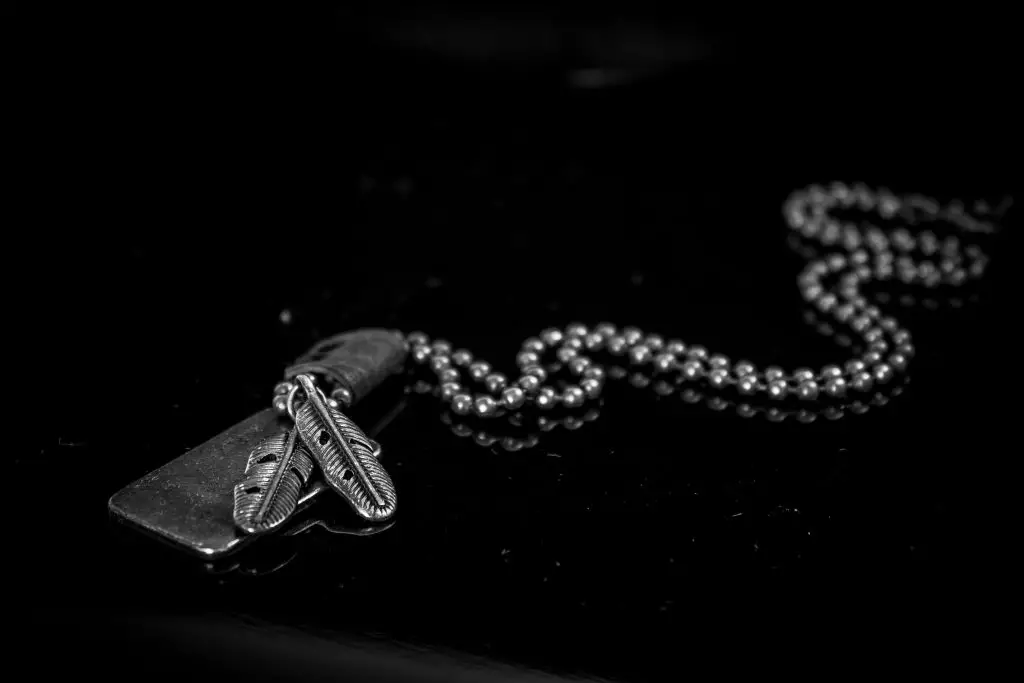Actually, why does jewelry turn black? I’m sure you have noticed that your jewelry has turned black. It may be a wedding ring, earrings or rings. It could be a necklace or bracelet from your grandmother. It could even be something you bought recently and never wore before today. Whatever the case, it’s not just metals turning black but also gems and stones like ruby, emeralds, and sapphires, among others.
Contents
Why does jewelry turn black?
If your jewelry has turned black, it might be because of oxidation. This chemical reaction occurs when metals come into contact with oxygen in the air and water. Oxidation can make the metal brittle and weak, which makes it more likely to break or crack when you wear your jewelry. If you care for your jewelry correctly (and clean it regularly), oxidation will only happen sometimes, as if you needed to take better care of them. There are many other reasons too.
Air
The most common reason jewelry turns black is exposure to air, which is why you’ll often see it happen when you put your earrings in or take them out of your ears. This is especially true with metal rings and bracelets exposed for extended periods.
Water
Another possible cause is water damage caused by sweat on the inside of your ring or bracelet from wearing it while swimming or exercising in the pool (or even just washing dishes). If this happens, however, don’t worry—it will wash off! Just make sure not to use soap if possible.
Chlorine residues are bad news when they get stuck inside pretty metals like sterling silver and gold plating over brass components like hooks and clasps on jewelry pieces made with real metal instead of cheap plastic materials used today. They don’t rust easily compared to other types, such as chrome plating, which tends to corrosion faster than sterling Silver due to its high purity level and ability to withstand harsh environments better than many other forms.
Chemical Reactions.
Jewelry can react with the air and turn black. This is because the chemicals in jewelry can absorb traces of chemicals from your skin, including those that cause corrosion or tarnish.
Jewelry can also react with each other if they need to be cleaned appropriately or stored away from each other in an airtight container. The same goes for jewelry made of different metals; this will result in a “tarnished” look on your piece, reflecting light differently than it did when you first got it!
The last type of reaction can happen when the wearer’s skin interacts with substances within their piece (like sweat from opening up a ring). Over time this contact causes some colors to fade away entirely while others remain visible even after decades have passed since delivery!
Humidity.
Jewelry can also turn black when it is exposed to humidity. This happens when your jewelry is wet, like the inside of a shower or pool. The water expands and contracts the metal, causing it to bend and dent at its edges.
There are several methods you can prevent this from happening:
- Put your jewelry away after each use so that it doesn’t get too damp; this will help keep its shape better than if you leave them out overnight (which will cause them to expand).
- Dry-clean any pieces that have been cleaned, so they do not turn black from sitting around all day before wearing again – this way, those parts won’t crack open over time due to expansion caused by being dampened constantly throughout use!
Why Silver turns Black? Why does jewelry turn black
Silver jewelry will turn Black in a day if left in a damp, humid environment. Sulfur, abundant on Earth, will tarnish the silver mine even in the tiniest amounts. It must be stored in an airtight manner when not in use. If the proper usage conditions are not followed, it is common for all Silver products to darken. Chemicals have a substantial effect on silver jewelry.
Silver jewelry experiences corrosive and darkening effects when chemical substances like cream, bleach, deodorant, and detergent come into contact with it. In salt water or seawater, silver jewelry can also quickly turn dark. When swimming in the sea, it is best to take them off.
Why Gold turns Black? Why does jewelry turn black
Over time, the kinds of gold jewelry you wear, mainly wedding rings, start turning black. Gold rings and bracelets you wear frequently are exposed to cleaning supplies like bleach and dishwashing liquid throughout the day. When your gold jewelry breaks, be careful not to let the liquid in your thermometer come into contact with it.
 Prepare an eggshell, vinegar, salt, and water solution if your gold jewelry has turned black despite your best efforts. If you clean the inside, outside, and edge areas of your Gold once every two to three months with an old brush, it will begin to shine. Other techniques exist for polishing different types of jewelry and Gold.
Prepare an eggshell, vinegar, salt, and water solution if your gold jewelry has turned black despite your best efforts. If you clean the inside, outside, and edge areas of your Gold once every two to three months with an old brush, it will begin to shine. Other techniques exist for polishing different types of jewelry and Gold.
How to get rid of Black
Gold Jewelry
- Metal components used in jewelry are close to our skin. After some time, the perfect brightness of our jewelry begins to dim. Again, this is related to the amount of oil in our bodies. Some jewelry darkens in a week, while others do so in a year. 4 out of 10 people, according to a study, have any darkened metal.
- There is a 100 % perfect natural recipe that will get rid of the body oils that get into the jewelry. Our natural cleaning supplies include a container big enough to hold your jewelry, one white eggshell, a few garlic cloves in their shells, a small piece of potato, a pinch of salt, vinegar, and some water after soaking in this solution for roughly 25 to 30 minutes. The jewelry is cleaned by gently rubbing with a toothbrush with a soft bristle. Your jewelry is then ready to be worn again after being rinsed with warm water and dried.
Silver Jewelry
- It would help if you used this technique because you will see excellent results in a short amount of time. You’ll need baking soda, dry cloth, aluminum foil, boiling water, and kitchen tongs. If the darkening is moderate, 2 to 5 minutes should be sufficient; however, if it is excessive, you can leave it for up to 10 minutes. Be prepared to see a perfect outcome once the drying process is finished!
- To make a paste for cleaning silver jewelry, combine white vinegar, two tablespoons of baking soda, and one tablespoon of water. Mix thoroughly, then chill for two to three hours. After rinsing and drying, you can resume using your silver jewelry!
why does jewelry turn black- Imitation Jewelry
- Lemons contain citric acid, ideal for removing the layer that builds up on jewelry’s surface over time and darkens it. This procedure can be done by squeezing the juice from a lemon cut in half directly onto the jewelry or mixing baking soda with the lemon juice.
- Even the toughest stains on imitation jewelry can be removed and made to look brighter with a simple old toothbrush and toothpaste. After cleaning, you should ensure the jewelry is completely dry because if it isn’t, it could rust. With the aid of a hairdryer, we can eliminate this risk.
Conclusion on Why does jewelry turns black
If your jewelry has turned black, it might be because of oxidation. This chemical reaction occurs when metals come into contact with oxygen in the air and water.
Now you know why does jewelry turn black and what to do if your silver jewelry has turned black. If you follow these tips and don’t allow your jewelry to become tarnished, it will remain shiny for many years.
Image Credits : Pexels.com
Read more : Jewelry





